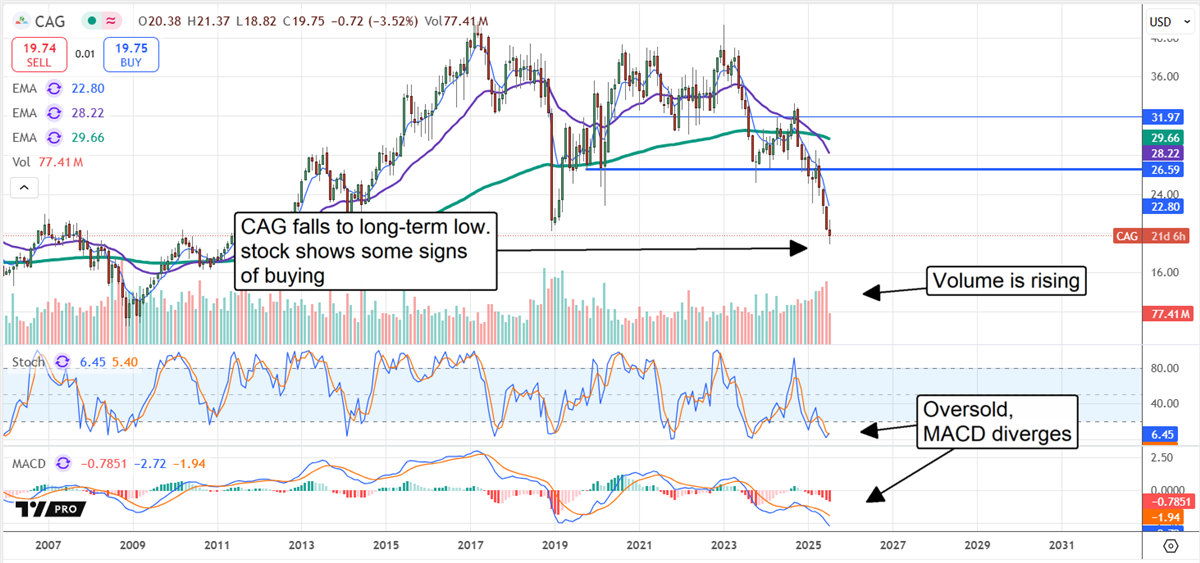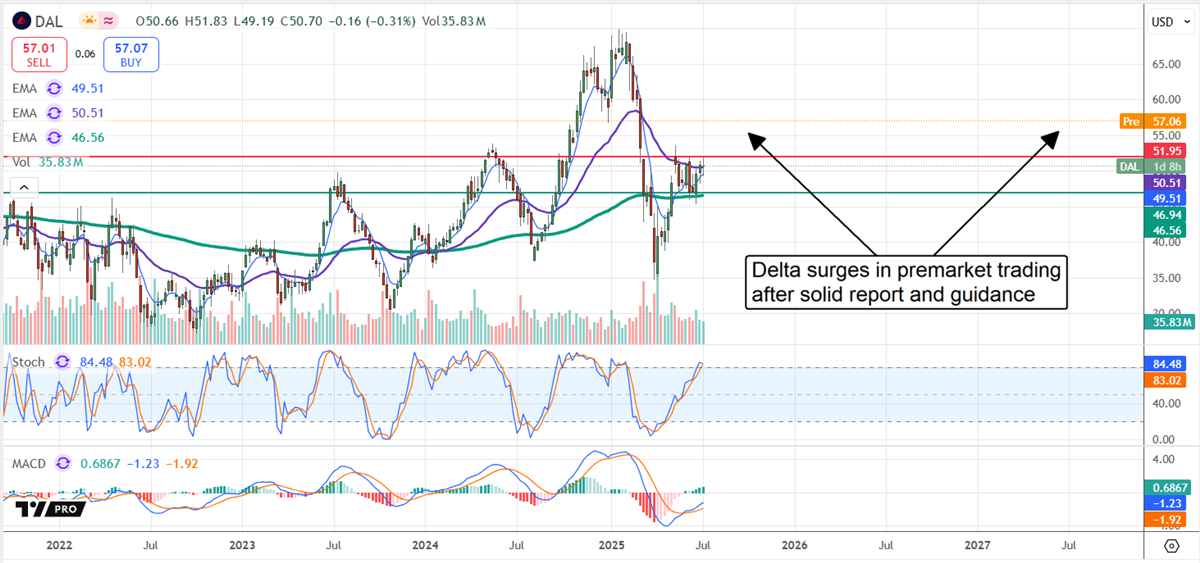 Financial discipline, a critically acclaimed new processor, and a major foundry partnership have created positive momentum for Intel ahead... ͏ ͏ ͏ ͏ ͏ ͏ ͏ ͏ ͏ ͏ ͏ ͏ ͏ ͏ ͏ ͏ ͏ ͏ ͏ ͏ ͏ ͏ ͏ ͏ ͏ ͏ ͏ ͏ ͏ ͏ ͏ ͏ ͏ ͏ ͏ ͏ ͏ ͏ ͏ ͏ ͏ ͏ ͏ ͏ ͏ ͏ ͏ ͏ ͏ ͏ ͏ ͏ ͏ ͏ ͏ ͏ ͏ ͏ ͏ ͏ ͏ ͏ ͏ ͏ ͏ ͏ ͏ ͏ ͏ ͏ ͏ ͏ ͏ ͏ ͏ ͏ ͏ ͏ ͏ ͏ ͏ ͏ ͏ ͏ ͏ ͏ ͏ ͏ ͏ ͏ ͏ ͏ ͏ ͏ ͏ ͏ ͏ ͏ ͏ ͏ |
| | Written by Jeffrey Neal Johnson 
Recent price action in Intel Corporation (NASDAQ: INTC) stock has been anything but quiet. Shares have staged a multi-day price battle, bringing Intel’s stock to multi-month highs, breaking convincingly above the $23 mark and posting a three-month gain of over 19%. This ascent, however, has been marked by volatility, and the dynamic price movement is not random noise. It reflects a market grappling with a series of significant, fundamental changes within the company. While the stock's surface appears unsettled, a powerful combination of strategic discipline, product execution, and new business wins is building potential energy. This has created a coiled spring scenario, with anticipation mounting ahead of the company's pivotal second-quarter earnings report on July 24. That report could be the catalyst that validates the recent optimism and potentially triggers the stock's next major move. Intel’s New Path to Profitability The first component of this building pressure is a new and tangible commitment to financial discipline. Under CEO Lip-Bu Tan, investors have been rewarded with clear, pragmatic decisions to strengthen the company's balance sheet and pave the way to profitability. The most significant of these is a strategic pivot in its manufacturing roadmap. Intel has chosen to prioritize the more cost-effective and higher-yielding 14A process for its upcoming products. This is a deliberate move designed to improve gross margins, a key metric for investors aggressively. This enables Intel to offer its most advanced 18A process to external foundry customers, such as Microsoft (NASDAQ: MSFT), allowing for a dual strategy of pursuing both internal profitability and external technology leadership simultaneously. The company’s capital management strategy further demonstrates this financial prudence. Intel recently filed to sell approximately 35 million shares of its majority-owned subsidiary, Mobileye (NASDAQ: MBLY). This move is expected to raise over $1 billion, providing funds for ambitious factory construction plans without taking on additional debt or diluting Intel’s shareholders. For a company that has navigated several years of negative free cash flow, these coordinated actions provide a credible and reassuring path toward a healthier financial future. How Lunar Lake Changes the Narrative The second pillar of the turnaround story is no longer theoretical; it is on store shelves. The official launch of laptops featuring Intel's new Lunar Lake Core Ultra 200V series processors provides the first major proof point of the company's revitalized design and engineering capabilities. Initial reviews from major independent tech publications have been overwhelmingly positive. They highlight two key victories that directly impact Intel's most important market. - First, reviewers consistently praise the chip's significant leap in power efficiency, which translates to substantially longer battery life in premium laptops. This directly addresses a historical weakness and makes Intel highly competitive in the most profitable segment of the PC market.
- Second, Lunar Lake's new Neural Processing Unit (NPU) is being recognized for its powerful on-device artificial intelligence (AI) performance. This establishes Intel as a leader in the emerging AI PC category, which is expected to drive the next major upgrade cycle in the computer industry. This success is tangible evidence for investors that Intel can execute on its roadmap and deliver a winning product in its largest revenue segment.
A Landmark Partnership The final component building pressure is a landmark strategic win that validates Intel's high-risk, high-reward foundry ambitions. At a recent industry event in South Korea, Intel announced a major collaboration with SK Hynix, a global leader in memory manufacturing. Under the deal, SK Hynix will use Intel Foundry's advanced packaging technologies for its next-generation High-Bandwidth Memory (HBM). For investors, this partnership is of immense strategic importance. HBM is a critical component used in virtually all high-performance AI accelerators, where memory is stacked directly on the processor. By becoming a key packaging partner for a leading HBM supplier, Intel inserts itself directly into the heart of the broader AI hardware supply chain. This move demonstrates that Intel Foundry can compete and win against industry leader Taiwan Semiconductor Manufacturing Company (NYSE: TSM) (TSMC) in the critical area of advanced packaging. It provides significant external validation of the foundry's technology, de-risks the execution story, and opens a vital new revenue stream tied directly to the growth of AI. Will the Spring Bounce? The combination of disciplined restructuring, proven product execution, and strategic foundry wins has created a powerful setup heading into Intel's earnings report. The stock has rallied in anticipation of these strategies translating into improved financial results. On July 24, investors will be listening intently for confirmation. Key items to watch will be management's commentary on initial sales of Lunar Lake-based systems, any upward revision to the company's gross margin outlook, and further details on the foundry business's customer pipeline. A strong report with confident forward guidance could be the definitive catalyst to validate the recent rally, rewarding patient investors and potentially uncoiling the spring for the next significant move higher.  Read This Story Online Read This Story Online |  The AI boom isn't just transforming technology—it's redefining global power, increasing government debt, and ushering in more economic uncertainty.
Claim your FREE AI & Gold Report today and learn what central banks, investors, and analysts are seeing—and how gold can help protect your savings in an uncertain, AI-driven world. ▻ Get ahead of the trend—CLICK HERE to claim your FREE AI & Gold Report now! |
| Written by Thomas Hughes 
Conagra (NYSE: CAG) shares are at rock bottom in early Q3 2025, offering an ideal entry for buy-and-hold investors. Although headwinds persist for the entire consumer staples sector, the company’s business contraction has come to an end, and repositioning efforts have positioned it to return to growth in FY2026. It will take time for the turnaround to gain traction; until then, the 7% dividend is reliably safe, offering income investors with a long-term time horizon some incentive to buy. The price action is bearish following the release, shaving 5% off the share price and setting a new long-term low. The market may continue to sell off, but oversold stochastic and divergence in the MACD suggest this market is overextending and setting up for a rebound. 
Conagra’s Dividend: How Risky Is the 7% Yield? The dividend comes with some risk in 2025, and a cut can’t be entirely ruled out, but it is mitigated by the cash flow, balance sheet health, and outlook for organic business improvements. The payout ratio for 2026 is forecasted at 80% relative to the 2025 payout, which is high for any company but more sustainable relative to the free cash flow outlook. The free cash flow payout ratio was closer to 50% in 2025 and is not expected to increase significantly in 2026. The bigger risk is that the pace of distribution growth will slow or cease entirely. The balance sheet is rock solid, providing some flexibility for management. In 2025, operating activities enabled the company to reduce its debt and improve its leverage while investing in the business and paying dividends. Highlights at the end of FQ4 2025 include a reduced cash position offset by increased inventory, steady assets, reduced debt and total liabilities, and improved equity, which are tailwinds for the market. Conagra Repositions in the Face of Consumer Headwinds Conagra did not have a great quarter in Q4 F2025, with revenue declining by 4.3% reported and 3.5% organically. However, divestitures, consumption trends, and FX headwinds impacted the results, which don’t reflect the sequential improvements in the core business. The organic decline is due to a 1% reduction in price realization, compounded by a 2.5% decline in volume, which is not expected to linger much longer. The International segment led all reported declines. It declined by 13% due to M&A activity and foreign exchange headwinds, growing organically by 0.8%. The guidance is why this stock market is at or near its bottom. The reported revenue contraction expected for F2026 will be offset by flat to slightly higher organic growth and earnings sufficient to sustain balance sheet health and dividend distributions. This sets the market up to move sideways as it anticipates future business improvements, which could serve as catalysts for higher share prices. Until then, the dividend will keep many investors, including institutions, interested. Institutional activity is a critical factor; the group owns more than 80% of the stock, provides a solid support base, and has been buying on balance all year. Analysts Prime CAG Market for Significant Rebound The analysts' activity in 2025 is mixed, featuring numerous price target reductions and a few downgrades, all of which negatively impact the price action. However, the broad trends are bullish, including increased coverage, a firm Moderate Buy rating, and expectation for significant upside. The post-release stock price decline put CAG stock below the analysts' low-end range, setting it up to rebound by a low-single to high-double-digit amount, potentially 30% at the early July consensus. Assuming the company can gain traction in F2026, analysts' sentiment trends will strengthen and provide lift for the market.  Read This Story Online Read This Story Online |  |
| Written by Thomas Hughes 
Delta Air Lines (NYSE: DAL) is expected to reach new highs in 2025, as concerns inspired by tariffs and geopolitical tensions have proven overblown. The company’s Q2 results and guidance affirm that the strengths present in 2024 and Q1 2025 remain, providing solid cash flow and the ability to improve shareholder value this year, next, and over time. With a solid financial foundation and renewed investor confidence, Delta stock presents a compelling buy opportunity for the second half of 2025. Delta's Q2 Results Reinforce Growth Trajectory Highlights from the Q2 report include record-setting quarterly adjusted revenue, outperformance on earnings, solid margin results, balance sheet improvement, and favorable guidance suggesting that momentum will continue through year-end. Among the most notable developments in Q2 was the company’s cash flow performance. Delta generated $2 billion in free cash flow in the first half of the year, putting it on pace to achieve its full-year target of $3 to $4 billion. Based on current trends, it is likely the company will end the year at the higher end of that range. This cash flow strength also enabled Delta to reduce its adjusted net debt significantly, bringing the year-to-date total down $1.7 billion, a 10% decrease in just two quarters, and increase its dividend substantially. Delta Air Lines' Strong Quarter Lays Fears to Rest The dividend increase is worth 25% to investors, bringing the annualized payout to nearly $1.00. The payout is reliable in 2025, running at roughly 10% of earnings, and is expected to continue growing at a robust pace over the next two to three years. Regarding shareholder value, Q2 business activities resulted in an improved cash position, increased current assets and total assets, reduced liabilities, and a nearly 15% increase in equity. Delta Air Lines’ Q2 was solid, with operating revenue up due to growth in all major reporting segments, led by higher-margin revenue streams. The company’s reported revenue fell slightly compared to last year but rose by a low-single-digit pace at the operating level, setting a quarterly record. High-margin premium revenue grew by 5%, outpacing the main cabin, while loyalty revenue increased by 8%, international revenue by 2%, and corporate revenue by a low single-digit amount. The margin news is also good for this transportation stock. The company experienced a slight decline in total revenue per available seat mile (TRASM), but this was offset by decreased fuel costs and improved cost performance, in line with forecasts. The net result is an operating margin of 12.6%, 13.2% adjusted, down 100 and 130 basis points YOY, respectively, but as expected and sufficient to generate ample cash flow and outperformance on the bottom line. The adjusted $2.10 is down compared to the prior year, but a nickel ahead of MarketBeat’s consensus and the strengths are expected to carry into Q3 and Q4. The guidance is the driving force for Delta Air Lines' stock price action. The company pulled guidance earlier in the year, leading analysts to reduce their estimates, but reinstated it with the Q2 release. The reaffirmed outlook is not only strong, expecting YOY growth, but is also well-above the consensus estimates and leading to significantly improved market sentiment. Delta Air Lines Set to Soar in Back Half The price action in Delta stock was bullish following the release, rising more than 10% in premarket trading to clear a critical resistance hurdle. The move affirms the rebound that began in April, setting the market up to continue rising in Q3. It also aligns with the analyst's sentiment, which, although diminished from earlier in the year, predicted a 20% upside leading into the Q2 report and will likely improve as Q3 progresses. Institutional trends also align with a rising DAL stock price. They own more than 60% of the stock, provide a solid support base, and have been buying on balance in 2025. 
 Read This Story Online Read This Story Online |  |
|
| |
|
|